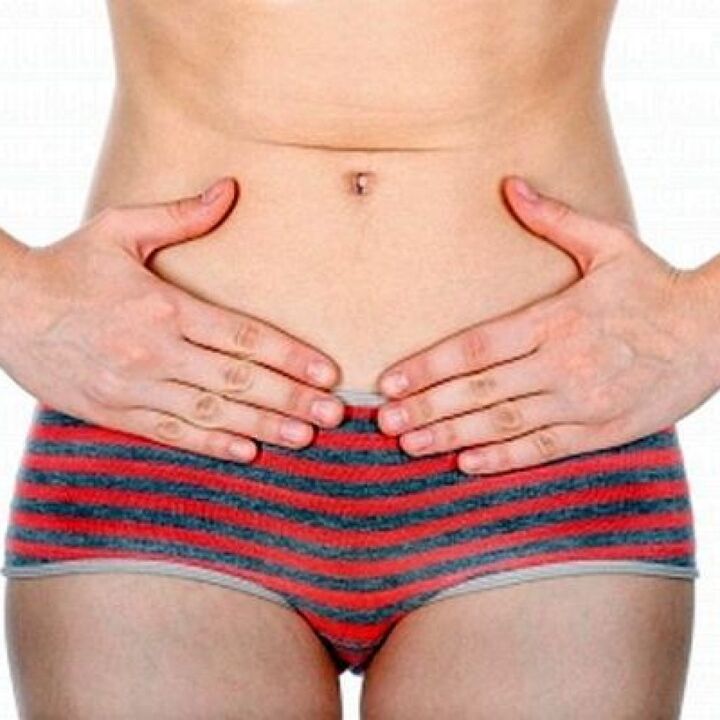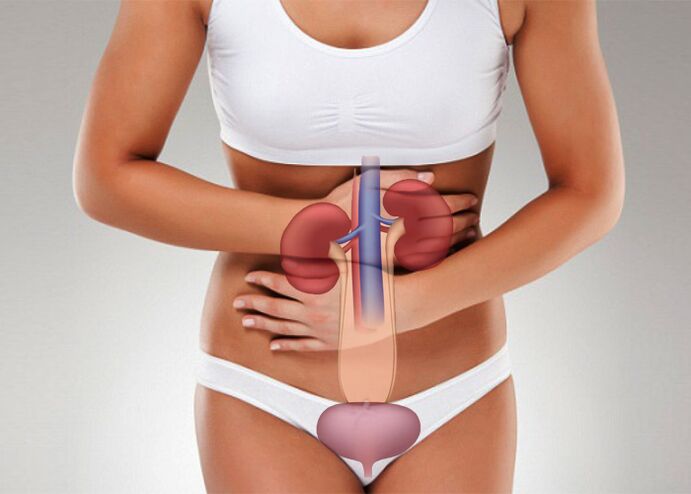In the urine system, the bladder plays the role of a collector's storage collector: exhausted blood filter products come from the kidneys through the ureter.It is thanks to the bladder and two muscle rings, from which a conscious commands by the central nervous system obey, a healthy person can urinate, need and opportunities.The "possibility" in the early stages of evolution was initially meant a safe atmosphere;With the advent and development of human civilization, urination called for special conditions, i.e. a break in social activities, a specially designed place and/or the loneliness of representatives of the opposite sex.

Cystitis is an inflammatory process on the inner walls of the bladder.A disease that causes pronounced physiological and psychological complaints as well as a certain social miscapteration.A person of all ages and gender can be exposed to this misfortune, but it is no coincidence that cystitis is sometimes referred to as the curse of a modern woman (it would be more correct to say "one of the curses", since this is not the only disease).The main reason lies in the anatomy: compared to the male female urethra (urethra), is much shorter, more elastic, wider and more rabid.This creates extremely comfortable “goals” for the penetration of rising urogenital infections, the prevalence and diversity of which are really very large in the modern world.And although not every cystitis has an infectious character, it is the mechanism described of its development that is a key factor for epidemiological inter-shower differences: According to various sources, cystitis in women of active age occurs 6 to 8 times more often than in men.
In general, the statistical analysis enables the problem in a variety of angles.So many sources show that at least one pale attack is at least half of all women during life.At least every fourth is regular or chronically ill (some authors even consider this data very low because not all sick people are looking for a doctor).According to medical documentation, clinics in all urological patients achieve 67%patients with cystitis.In urological hospitals, this indicator is 5-12% (in other words, the percentage of hospitalization in cystitis is also very high, which again confirms the social importance of this disease).The frequencies of acute and chronic forms are approximately 2: 1.
The difference in the incidence between the floors is shaped on older and senile age: in the categories of the age of age, the proportion of men, which is comparable to a similar percentage of women.But in a mature, young, young age (and sometimes in a teenager or even child), if it is to live, it seems to be happy!- Cystitis is waiting and mainly chooses women.
Reasons
The wall of the bladder is naturally protected from infections, fundamentally well protected;The dominance of infectious etiology of cystitis is not due to susceptibility as such, but to a combination of a high probability of infection with unwanted external and internal conditions, most of which are somehow connected to the way of life.The main risk factors include acute and chronic infections in other body systems (from caries and colitis to acute respiratory infections -Sexual transmitted diseases), hypothermia, hypovinosis, after surgical exhaustion, rigid diet, revision and permanent lack of sleep, psycho -emotional stress, especially sexual loose, accidental looseGender, gender (especially not -rotrodital linen), and random gender, sexually (especially not -rotrodital paralysis, and text -related gender, gender, sexually, sexually, sexual (especially not -kretic loose), and random gender (in particular not -Tridital. Inadequate hygiene (it is difficult to imagine, like hygiene skills and needs in 21.Century can be inadequate, and yet this factor remains important).Phase of the menstrual cycle or menopause in which literature are connected).

We also find that the infection not only rises, but also descending paths can penetrate the bladder - from the kidney affected by nephritis.
Non-infectious forms include chemical-toxic (including medicines), allergic, radiant, traumatic, parasitic.
Symptoms
The classic symptoms of cystitis initially include intensive symptoms when urinating: rubbing, pain, burning, etc. Often, uration leaves the feeling that the bladder is not completely emptied.Many patients complain about repeated or false urge, note that the "leakage" of the urine in the linen or the imperative nature of the urge (because anatomical reasons are also in women who often "have no time and are forced to stay closer to the toilet).In some cases, the cloudiness or an admixture of blood in the urine is revealed;Hematuria should be described as the most dangerous urological symptom and requires an immediate differential diagnosis, since the presence of blood in urine can not only be caused by cystitis but also for the causes of life.
It is typical and is usually strongly expressed with cystitis of pain syndrome: pulling or spicy, bursting or painful pain in the lower abdomen, often with radiation in the crotch or back.Without such or similar pain, no more than 10% of all aperture infections.With a sufficient immune response, general malaise, fever, weakness, headache are often intense.
The most likely and most severe complications of cystitis include the so -called SO -Interstitial form if not only the mucous membrane, but also a deeper muscle layer of bladder walls is involved in the inflammatory process (ultimately this can affect wrinkles of the bladder and the spread of the bladder failure and the spread of infections that affect the spread of infections, and the intensive degrees.etc.).
Diagnosis

In addition to a clinical examination and a standard urological inspection (however, many women prefer not to treat the flowering period with a urologist, but to "" gynecologists), are primarily prescribed for laboratory tests.So far, many types of methods for detection of pathogen have been used successfully - as shown above, the most likely cause should always be regarded as bacterial, viral or fungal infection.Ultrasound, less than cystoscopy, less than cystography, biopsy and other studies are prescribed as a diagnostic necessity.
Diagnosis
In addition to a clinical examination and a standard urological inspection (however, many women prefer not to treat the flowering period with a urologist, but to "" gynecologists), are primarily prescribed for laboratory tests.So far, many types of methods for detection of pathogen have been used successfully - as shown above, the most likely cause should always be regarded as bacterial, viral or fungal infection.An ultrasound, an internal study of the bladder, an X beam study of the bladder, biopsy and other studies are also prescribed as a diagnostic necessity.
Treatment
Acute cystitis in chronic turns often, light and insidious: the gradual reduction in symptoms, even their complete disappearance, does not mean recovery at all.Therefore, the signs of cystitis described above in one of their combinations (especially since these symptoms are inherent in many other urological diseases) require an immediate visit to the doctor and not the expectation of the patients while “passes through”.We can see that a large number of good, intelligent, friendly, centuries -long and other similar tips on the Internet (where you can find recommendations in the area of fairly reasonable to schizophrenic or fraudulent) one of the factors more often chronic and complications of cystitis.
Based on the results of the diagnostic examination, a certain, always strictly individual treatment scheme is always prescribed, and the cause of the inflammation is initially coordinated.In different cases, antibiotics, antivirals, antifungal medicines, immunomodulators and immunosimulation, antihistamines and anti -inflammatory medication as well as antipas modos can be used.The sanitary facilities of chronic infections in other areas and the treatment of background diseases (nephrolithiasis, prostate -adenom, etc.) are required.In addition, a diet, increased fluid intake and a savings regime are to avoid hypothermia and other risk factors.Phytotherapeutic active ingredients are only prescribed by a doctor and also controls the effectiveness of your administration.
Subject to these diseases, blood inflammation is healed.




























